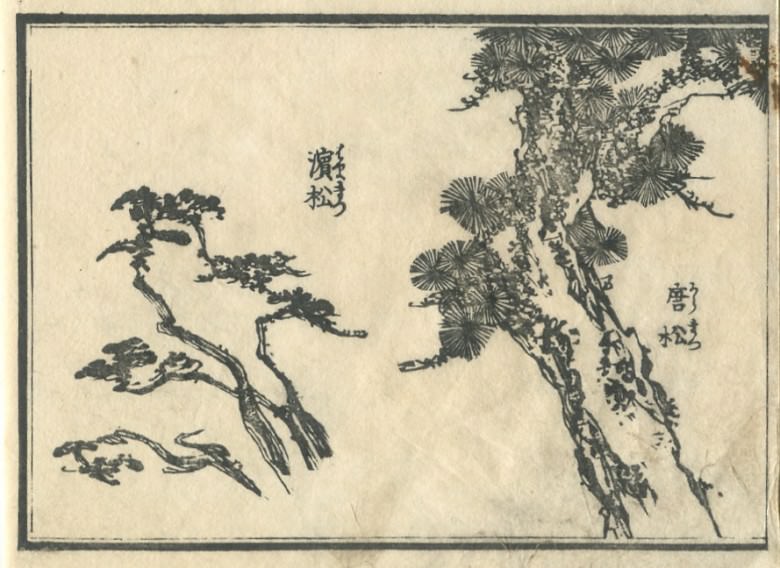Two kinds of pine are drawn.
· Hama-matu
· Kara-matu
I do not know the exact meaning of “Hamamatsu”, but I guess it is probably a pine growing on the beach by the sea.
Because the actual thing of “Karamatsu” seems to grow fairly straight, the pine of this picture may be a Chinese pine.
By painting differently, the same pine also makes such a difference.
Speaking of pine, you can see its appearance in Japan’s life from ancient times as being drawn on a screen or used as a fitting. Basically it is drawn powerfully, but this picture is also the same. Especially Karatsu has overwhelming presence.
・Hama-matu
・Kara-matu
「濱松」の正確な意味はわかりませんが、おそらく海沿いの浜に生えている松かと思います。
「唐松」の実物はかなりまっすぐに育つようですから、この絵の松は中国の松なのかもしれません。
描き分けることで、同じ松でもこれほどの違いがでます。
松と言えば屏風に描かれたり建具に用いられたりと、古来より日本の生活の中でその姿を見ることができます。基本的には力強く描かれていますが、この絵も同様です。特に唐松は圧倒的な存在感があります。
「濱松」と「唐松」が描かれています。「濱松」の正確な意味はわかりませんが、おそらく海沿いの浜に生えている松かと思います。「唐松」の実物はかなりまっすぐに育つようですから、この絵の松は中国の松なのかもしれません。描き分けることで、同じ松でもこれほどの違いがでます。
松と言えば屏風に描かれたり建具に用いられたりと、古来より日本の生活の中でその姿を見ることができます。基本的には力強く描かれていますが、この絵も同様です。特に唐松は圧倒的な存在感で迫ってきます。

